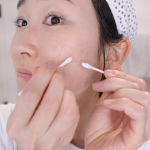Choosing the right sunscreen can be confusing, especially with the wide range of products available. Two of the most common types are chemical and physical sunscreens, each offering different benefits and protection levels. Understanding the difference between them is crucial for making an informed decision about which is best for your skin type and lifestyle. Both options have their strengths and drawbacks, so knowing what each one offers can help you protect your skin effectively.
Chemical sunscreens work by absorbing UV rays, while physical sunscreens sit on top of the skin to reflect them. The effectiveness of these sunscreens depends on various factors, including your skin type, how long you spend in the sun, and your sensitivity to certain ingredients. By comparing these two types of sunscreens, you can better determine which one will provide the protection you need. Making the right choice can prevent sun damage, premature aging, and even skin cancer.
What Chemical Sunscreens Are Made of
Chemical sunscreens are formulated with organic compounds like oxybenzone, avobenzone, and octinoxate. These ingredients work by absorbing UV radiation and converting it into heat, which is then released from the skin. This type of sunscreen is lightweight, easy to apply, and often found in various skincare products. Chemical sunscreens are ideal for those who prefer a non-greasy finish and want to avoid the white cast often left by physical sunscreens.
The main advantage of chemical sunscreens is their ability to provide broad-spectrum protection without feeling heavy on the skin. They absorb quickly and are perfect for daily use under makeup. However, some chemical sunscreens can cause irritation, especially for those with sensitive skin. It’s important to choose a formula that suits your skin type and to reapply it throughout the day, as chemical sunscreens can degrade in sunlight, reducing their effectiveness over time.
What Physical Sunscreens Are and How They Work
Physical sunscreens, also known as mineral sunscreens, contain active ingredients like zinc oxide and titanium dioxide. These minerals sit on the surface of the skin, physically blocking and reflecting UV rays. Unlike chemical sunscreens, physical sunscreens begin working immediately upon application. They are often recommended for sensitive skin types because they are less likely to cause irritation or allergic reactions.
A key benefit of physical sunscreens is their stability in sunlight. They do not degrade as quickly as chemical sunscreens, providing longer-lasting protection. Additionally, physical sunscreens offer better protection against both UVA and UVB rays. However, they can sometimes leave a white residue on the skin, making them less appealing for those with darker skin tones. Despite this, their broad-spectrum coverage and gentle formula make them a preferred choice for many.
1. The Benefits of Combining Both Types of Sunscreens
Combining chemical and physical sunscreens can offer comprehensive protection. Chemical sunscreens absorb UV radiation, while physical sunscreens reflect it, creating a dual-layer of defense. This combination can be particularly beneficial for people with different skin needs or those who spend extended time outdoors. By layering both types, you ensure that your skin is protected from various angles, reducing the risk of sunburn and long-term damage.
Using a combination approach also allows you to take advantage of the strengths of each sunscreen type. For instance, you can apply a chemical sunscreen for a lightweight feel and follow it up with a physical sunscreen for immediate protection. This strategy ensures that you are covered from the moment you step outside. Additionally, combining sunscreens can enhance the longevity of your protection, as each type compensates for the weaknesses of the other, providing a more reliable barrier against UV rays.
2. Choosing the Right Sunscreen Based on Your Skin Type
Your skin type plays a significant role in determining which sunscreen is best for you. If you have oily or acne-prone skin, chemical sunscreens may be more suitable due to their lightweight texture and non-comedogenic properties. On the other hand, if you have sensitive or reactive skin, physical sunscreens might be the better choice because they contain fewer irritating ingredients. Understanding your skin’s needs can help you make an informed decision and avoid common skincare issues.
It’s also important to consider any specific skin concerns you might have. For instance, if you are prone to hyperpigmentation, a physical sunscreen with zinc oxide can provide better protection against the UVA rays that contribute to dark spots. Meanwhile, those with dry skin may benefit from chemical sunscreens that often include hydrating ingredients. Ultimately, choosing the right sunscreen requires a balance between protection, comfort, and skin compatibility to ensure your skin remains healthy and protected.
3. How to Effectively Apply and Reapply Sunscreen
Proper application is key to ensuring your sunscreen works effectively. Whether using chemical or physical sunscreen, it’s important to apply it generously and evenly across all exposed areas of skin. Most people do not use enough sunscreen, which reduces its effectiveness. As a rule of thumb, use about a teaspoon of sunscreen for your face and about an ounce (a shot glass) for your body. Ensuring full coverage will help you maximize the protective benefits of your sunscreen.
Reapplication is just as crucial as the initial application, especially after sweating, swimming, or spending extended time outdoors. Even if your sunscreen is labeled as water-resistant, it should still be reapplied every two hours. For convenience, consider using a spray or stick sunscreen for touch-ups throughout the day. By diligently reapplying your sunscreen, you maintain consistent protection, reducing the risk of sunburn and other forms of UV damage.
Choosing the Best Sunscreen for You
When deciding between chemical and physical sunscreens, consider your skin type, lifestyle, and specific skincare needs. Both types offer effective sun protection but in different ways. Chemical sunscreens are ideal for daily wear under makeup due to their lightweight feel, while physical sunscreens provide immediate, broad-spectrum coverage, especially for sensitive skin. Understanding these differences can help you choose the best sunscreen for your situation, ensuring your skin remains protected from harmful UV rays.
Ultimately, the best sunscreen is the one you will use consistently. Whether you prefer the quick absorption of a chemical sunscreen or the gentle protection of a physical one, the key is regular application and reapplication. Sun protection is an essential part of any skincare routine, and selecting the right sunscreen is a vital step in preventing sun damage, premature aging, and skin cancer. By making informed choices, you can enjoy healthy, radiant skin all year round.








